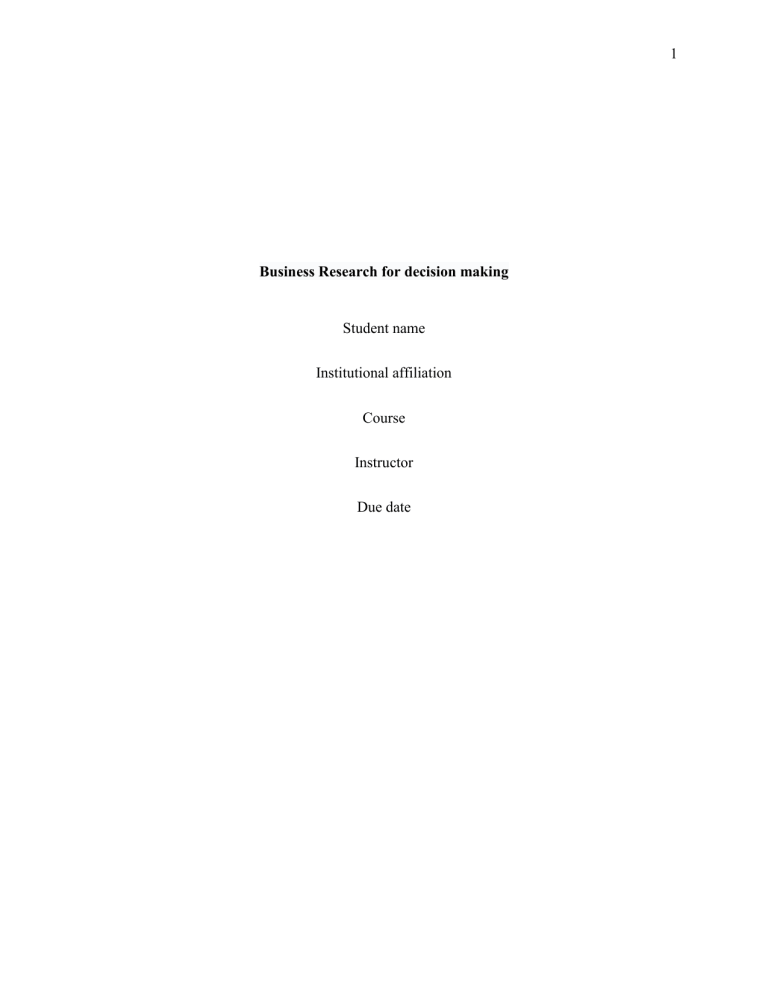
1 Business Research for decision making Student name Institutional affiliation Course Instructor Due date 2 According to Hofstrand (2019), strategy is how one utilizes the mission statement for the vision statement to be achieved. Normally organizations have one mission and vision but several strategies. Strategies can also be defined as the actions taken by the leaders of an organization to achieve one or more organizational goals. Vision is what the company is striving to achieve, the company’s purpose, while the mission is the general statement that explains how an organization’s vision will be achieved. The mission is the concise explanation of the reason why an organization exists. References Hofstrand, D. (2019). Vision and Mission Statements--a Roadmap of Where You Want to Go and How to Get There Micro and macro environments contribute greatly to the success of marking activities of an organization hence they must be considered in-depth. When analyzing the macro environments the PEST analysis is applied. The PEST analysis refers to the political, economic, social, and technological factors that externally influence the performance of an organization. The PEST analysis involves the collection of data related to political, economic, social, and technological issues and identifying the threats and opportunities in these factors. The aim is to minimize threats and increase opportunities. Microenvironments are the factors that affect the operations of the organization internally. The microenvironment is analyzed using Porter's Five Forces. The forces include competition, the power of suppliers, the threat of substitute products, power of consumers, and the new potential entrance to the market.The Five Forces reveal the nature of the competition 3 References Huang, Y. (2019, December). Strategic Environment Analysis of Logistics Enterprise based on SWOT-PEST-Michael Porter's Five Forces Model--Taking SF Express as an Example. In 2nd International Symposium on Social Science and Management Innovation (SSMI 2019) (pp. 44-50). Atlantis Press. Strategic planning refers to the process by which a business defines its strategy, as well as the decisions made about how much of an organization's assets should be used to maintain the system in order to achieve certain objectives and goals (Ferreira et al., 2018). It also gives the stage which helps in the assessment of progress. The analysis process involves the organization identifying its potential opportunities and threat. Through the strategic planning and analysis process, the organization is able to initiate, formulate and start working towards the goals and objectives since they are in a position to make planned vital arrangements. References Ferreira, J., Mueller, J., & Papa, A. (2018). Strategic knowledge management: theory, practice and future challenges. Journal of knowledge management. .









